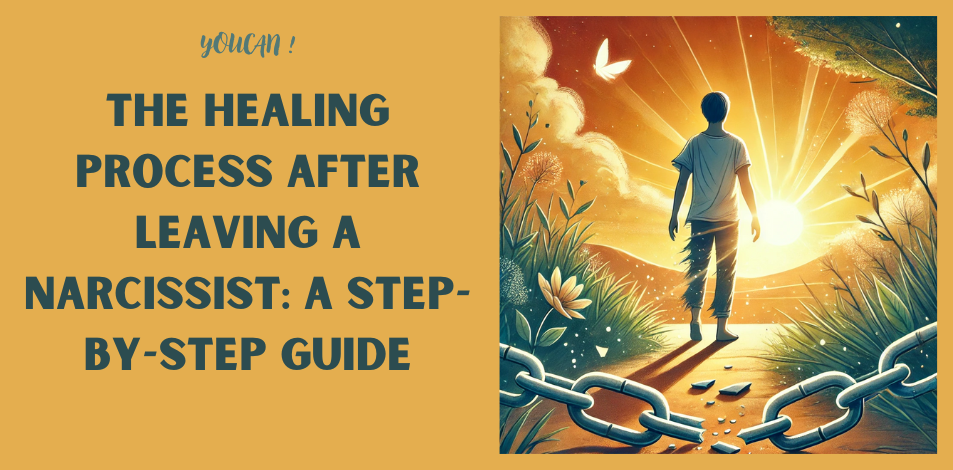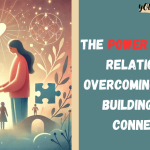
Leaving a narcissist can feel like stepping out of the fog and into the bright light of day. For many people, it’s a process of self-discovery, relearning, and healing. However, after breaking free from the influence of a narcissist, healing doesn’t happen overnight. It takes patience, commitment, and the right strategies to rebuild your life and restore your self-esteem.
In this guide, we’ll walk you through the journey of healing after leaving a narcissist, step by step, focusing on practical, actionable steps to help you reconnect with yourself and regain control of your life.
Step 1: No Contact
No Contact isn’t just a catchphrase; it’s essential to true healing. Narcissists thrive on controlling, manipulating, and keeping you within their sphere of influence. Here’s how to get started:
Block all contact: Phones, social media, and any mutual friends who may act as go-betweens.
Avoid public places you go together: Avoiding random encounters can help prevent unnecessary pain and setbacks.
Resist the urge to “check in” on them: It’s tempting to monitor their social media, but that only pulls you back into their orbit.
Why it works: Going no contact allows your mind to reprogram and break the habitual patterns the relationship has created. With no contact, you’re free from their influence and manipulation, creating the space you need to rebuild.
Step 2: Allow yourself to grieve
Leaving a narcissist involves grieving — not just the relationship but the idealized version of it you’ve held onto. This is normal, and it’s a crucial step in moving forward.
Accept the reality of the relationship: Acknowledge that the person you were with wasn’t capable of genuine love or compassion.
Fully feel your feelings: Allow yourself to feel sadness, anger, and confusion. Suppressing them only prolongs the healing process.
Write them down: Journaling can be an effective way to process complex emotions, helping you gain clarity about what you’ve been through and what you’ve learned.
Why it works: Grief allows you to come to terms with the past, rather than idealizing or regretting it. It’s also a crucial step in letting go of the emotional control that narcissists have over you.
Step 3: Rebuild Your Sense of Self
Narcissists often work to erode their partner’s self-esteem, convincing them that they’re unworthy or flawed. Now is the time to rebuild your self-image.
Focus on self-care: This can be as simple as a regular skincare routine, exercise, or time for a hobby.
Define your values: Think about what matters to you—your beliefs, goals, and passions. Reclaiming these values helps redefine your sense of self outside of the relationship.
Affirm your strengths: Remind yourself of the qualities that make you unique. If you’re a journaler, try writing down one strength each day to build self-affirmation.
Why it works: This step helps reestablish your self-worth, reminding you that you’re a whole person outside of your past relationship. The goal is to see yourself not through the narcissist’s eyes, but from a balanced perspective of who you are.
Step 4: Set Healthy Boundaries
Healing after leaving a narcissist means you need to learn how to protect yourself emotionally in future relationships, whether romantic or otherwise. Setting healthy boundaries can be life-changing.
Define your boundaries: Be clear about what you will and will not tolerate in relationships.
Communicate boundaries confidently: Practice saying “no” without apology or explanation.
Be assertive and consistent: Boundaries are only effective if you stick to them. Avoid compromising to please others.
Why it works: Boundaries help protect your mental and emotional health. They allow you to build relationships where respect and reciprocity are prioritized, setting the standard for healthier connections.
Step 5: Reconnect with Supportive People
One of the tactic narcissists often use is to isolate their partners from friends and family. Now that you’re free, it’s time to reconnect with the people who truly care about you.
Connect with loved ones: Tell trusted friends and family what you’ve been through and why you need their support.
Join support groups: Connecting with others who have been through similar situations can provide understanding and comfort.
Seek professional help if needed: A therapist trained in narcissistic abuse recovery can provide guidance tailored to your needs.
Why it works: Surrounding yourself with supportive people reminds you that you’re not alone and that you are loved and valued. It provides a vital network of support, encouragement, and positivity during this transition.
Step 6: Educate Yourself About Narcissism
Understanding narcissism can be helpful. It allows you to understand your experiences, avoid self-blame, and prevent similar patterns in future relationships.
Recognize narcissistic behavior and warning signs: Recognize signs of narcissism, such as manipulation tactics and manipulating others.
Understand that it wasn’t your fault: Narcissists often make their partners feel responsible for their behavior. It’s liberating to realize that their actions stem from their own issues.
Explore resources for healing: Books, online articles, and videos can provide insight and validation for your experience.
Why it works: Education provides clarity, helping you make sense of past confusion. It helps you move forward with more confidence, allowing you to recognize and avoid toxic behavior in the future.
Step 7: Rediscover joy and purpose
The journey of healing after leaving a narcissist is not just about recovering from the pain, it’s also about rediscovering joy.
Reconnect with hobbies you’ve given up: Try new activities or return to old ones, especially those that the narcissist discourages.
Set new goals: Whether it’s a career move, a fitness goal, or a creative project, new ambitions can inspire your life anew.
Celebrate small victories: Every step forward, no matter how small, is progress. Acknowledge your growth along the way.
Why it works: Narcissistic relationships often rob partners of their joy and personal passion. Reclaiming these things reinforces your new identity and fosters a positive outlook for the future.
Step 8: Be patient with the healing process
Healing from a narcissistic relationship takes time. There’s no quick fix, but patience is essential for lasting recovery.
Accept setbacks as part of the journey: Healing isn’t always linear, and you may experience triggers or emotional setbacks.
Focus on progress, not perfection: Celebrate the progress you make instead of expecting a perfect journey.
Practice self-compassion: Be kind to yourself as you navigate this new chapter. Avoid self-criticism and remind yourself that healing is a journey, not a race.
Why it works: Patience and self-compassion create a healing environment where you can grow without stress. By giving yourself time, you allow your mind and heart to truly heal.
Also read: Mastering the Narcissist: 5 Smart Strategies to Protect Your Peace
Final Thoughts
The healing process after leaving a narcissist is not easy, but with each step, you will find yourself becoming stronger, more confident, and closer to the person you truly are. Remember, you are not just recovering from the relationship; you are rediscovering the person you were meant to be.
Each step—uncommunicating, grieving, rebuilding self-esteem, and more—brings you closer to a life free of manipulation and filled with true happiness. Be patient and trust the process.
Read more: Conversational Narcissism: 5 Signs to Spot a Conversational Narcissist




